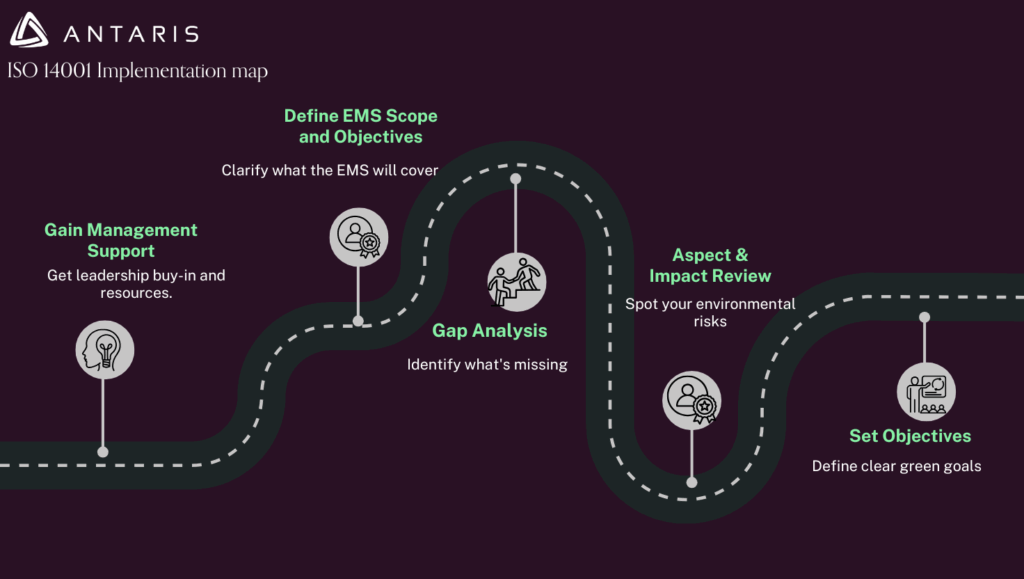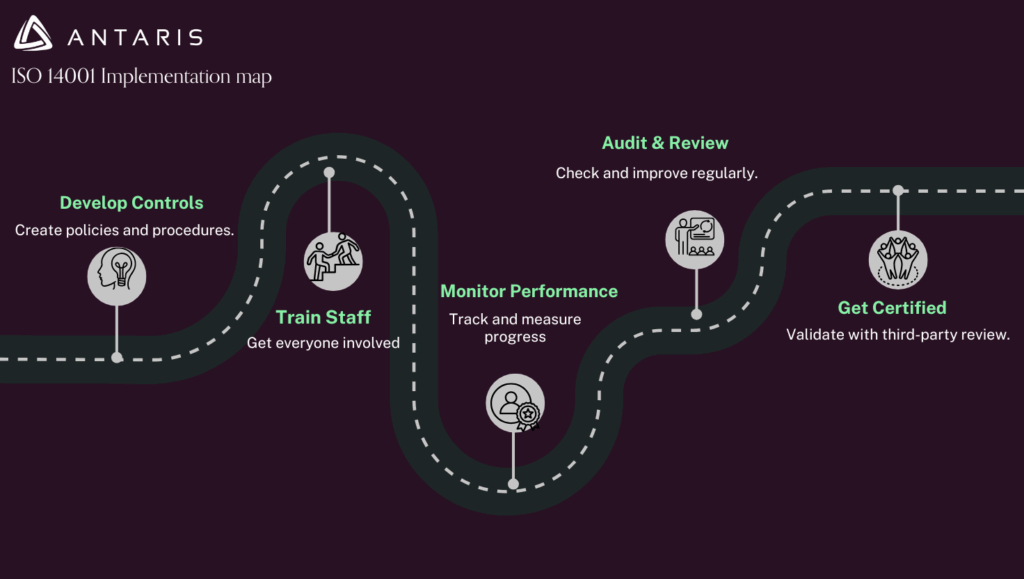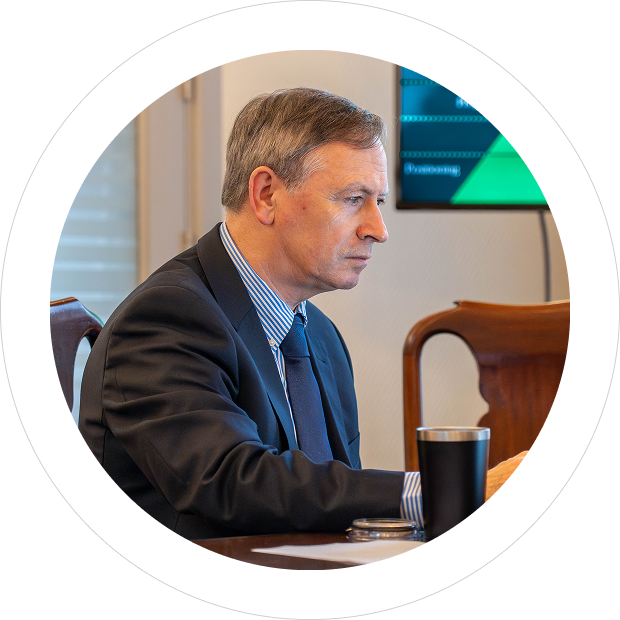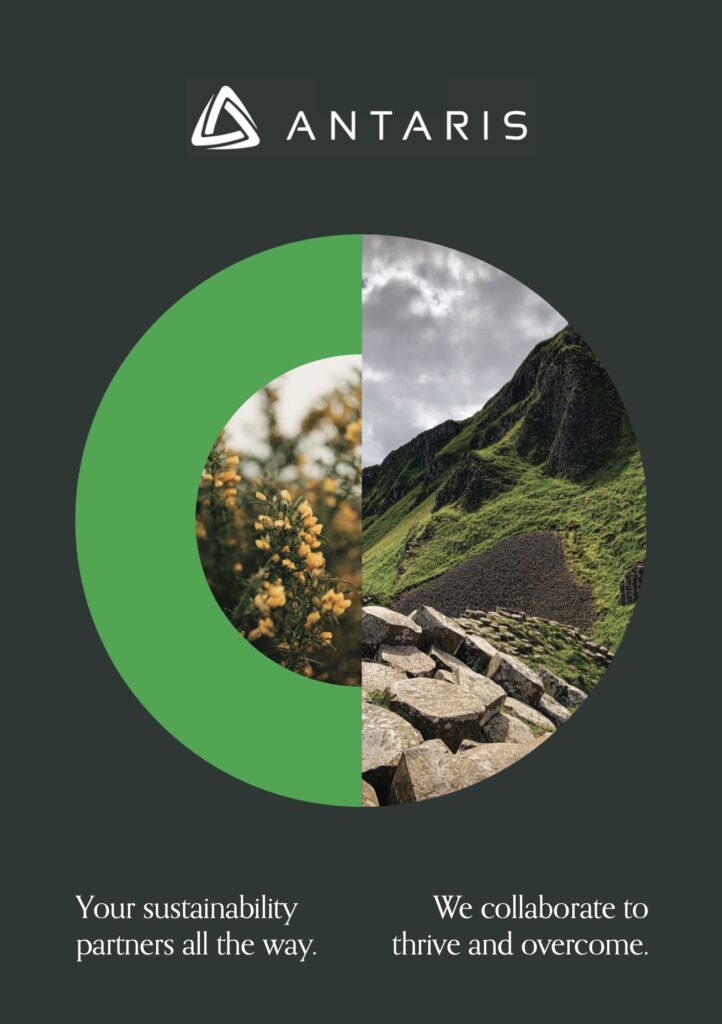In the current global climate, sustainability is no longer a choice reserved for the few; it is a business necessity. Whether you run a growing enterprise or a multinational organisation, environmental responsibility is increasingly central to strategic planning and risk management. The question is not whether to take action, but where to begin.
One of the most practical and effective starting points for embedding sustainability into business operations is the implementation of ISO 14001. As the internationally recognised standard for environmental management systems (EMS), ISO 14001 provides the structure and clarity that many businesses need when taking their first steps toward sustainable development.
Understanding ISO 14001
ISO 14001 was developed by the International Organization for Standardization (ISO) and sets out a comprehensive framework to help organisations manage their environmental responsibilities effectively. The aim is to reduce environmental harm, ensure regulatory compliance, and promote continual improvement across all levels of the business.
Unlike some sustainability frameworks that can feel abstract or difficult to navigate, ISO 14001 provides clear guidance and a step-by-step approach. It is particularly valuable for organisations that are just beginning their journey, offering a solid foundation for more advanced sustainability and ESG initiatives down the line
Why ISO 14001 is the Logical First Step
The strength of ISO 14001 lies in its clarity and versatility. It helps businesses identify the environmental aspects of their operations, set objectives and implement processes for ongoing improvement. The framework removes the guesswork and brings consistency to environmental performance management.
Implementing ISO 14001 also supports legal compliance by integrating applicable environmental regulations into daily operations. This reduces exposure to penalties while improving internal control. Beyond compliance, it often leads to cost savings through resource efficiency and waste reduction, making it not just good for the environment but also for the bottom line.
Importantly, ISO 14001 certification signals credibility. It reassures stakeholders, investors, regulators and customers that your organisation’s environmental practices meet a globally accepted benchmark.
Reinforced by Global ESG Principles and Regulation
The relevance of ISO 14001 in today’s sustainability landscape is further reinforced by recent developments in global and regional ESG frameworks. For example, in November 2024, the International Organization for Standardization introduced a new set of ESG Implementation Principles during COP29. These principles highlight the need for organisations to embed ESG factors into their core operations and specifically point to existing environmental management systems like ISO 14001 as a practical means of achieving this integration. You can read more about this guidance at www.iso.org, published in November 2024.
At the European level, sustainability reporting obligations continue to expand. The Corporate Sustainability Reporting Directive (CSRD) and the EU Sustainability Reporting Standards (ESRS), both in effect from 2025, require companies to disclose comprehensive environmental data. In this context, ISO 14001 becomes a valuable tool for generating structured, auditable data on emissions, resource use and environmental impact. Organisations that already have ISO 14001 in place are at a distinct advantage when aligning with these new reporting standards. Further insights can be found at www.footprint-intelligence.com and www.reuters.com, with updates published throughout 2025.
In addition, the EU has taken steps to regulate ESG ratings through Regulation 2023/0177, adopted in mid-2023. While this legislation does not name ISO 14001 specifically, it emphasises the importance of transparency and methodology in ESG evaluation. Environmental data derived from ISO-certified systems can enhance the credibility of an organisation’s ESG profile, giving external assessors more confidence in the information provided.
How to Implement ISO 14001
Starting your ISO 14001 journey doesn’t require deep technical expertise. The process typically begins with a gap analysis to assess where your organisation stands in relation to the standard’s requirements. From there, leadership engagement is critical. Senior management must commit to the process and allocate appropriate resources.
Next, define the scope of your environmental management system, set clear objectives and identify the environmental aspects and impacts of your operations. You’ll need to establish documented processes and responsibilities, train your team and integrate performance monitoring into your routine operations. Regular reviews, internal audits and management evaluations will help ensure continual improvement.
While third-party certification is optional, it is highly recommended for those seeking to demonstrate accountability and open new market opportunities.
Building Beyond ISO 14001
Implementing ISO 14001 is not the end of the road; it is the foundation. Once in place, it becomes easier to set science-based targets, measure Scope 1, 2, and 3 emissions and report under global ESG frameworks such as GRI, CDP or TCFD. The system also supports progress toward broader goals such as net-zero carbon strategies or circular economy initiatives.
Final Thoughts
For any organisation serious about sustainability, ISO 14001 is an ideal starting point. It combines structure, strategic alignment and operational effectiveness in a way that few other frameworks can match. Its value is further validated by its integration into international ESG principles, EU regulations and the expectations of investors and stakeholders alike.
Rather than viewing ISO 14001 as an administrative exercise, see it as a powerful enabler of long-term environmental performance and business resilience. It offers the clarity and credibility you need to begin your sustainability journey with confidence.
If your goal is to move beyond words and into action, ISO 14001 is where that journey should begin.










